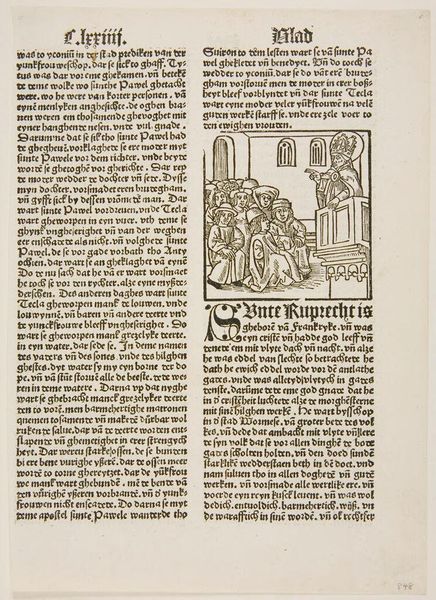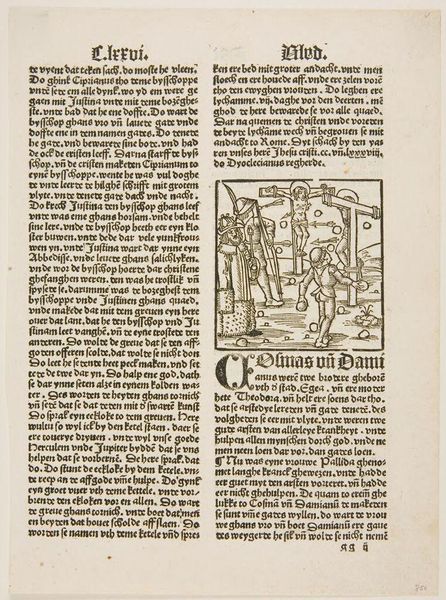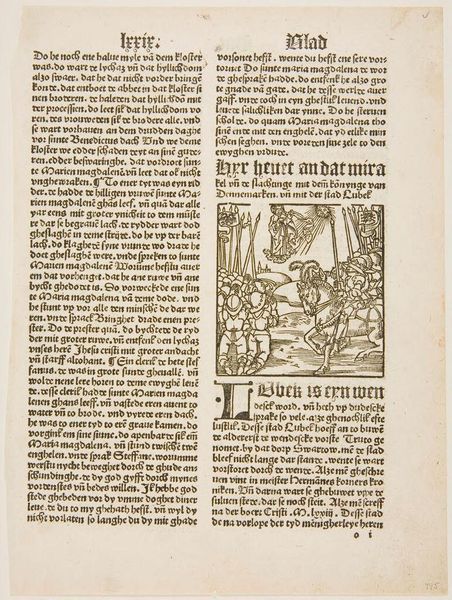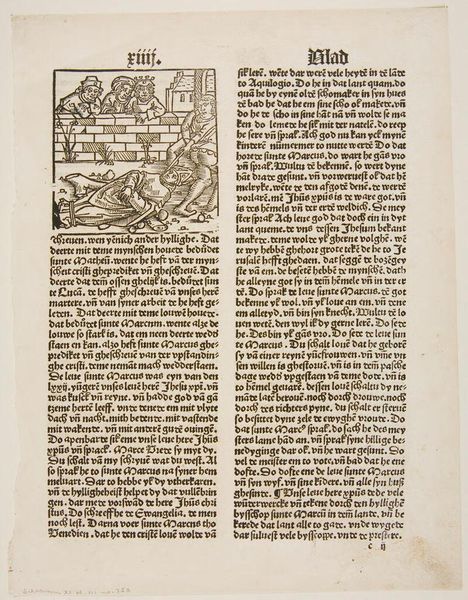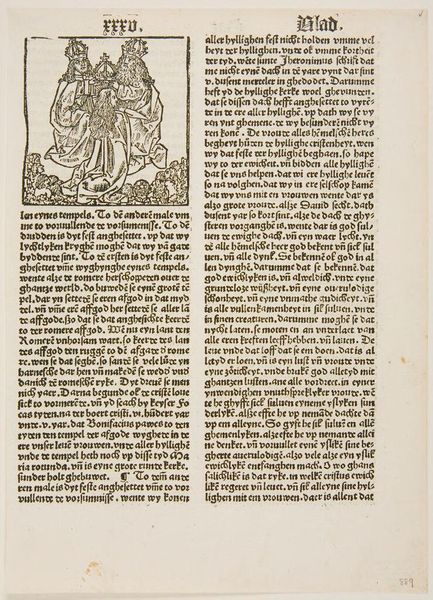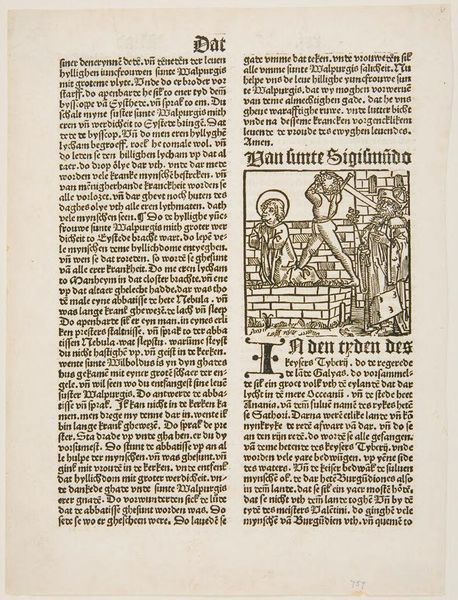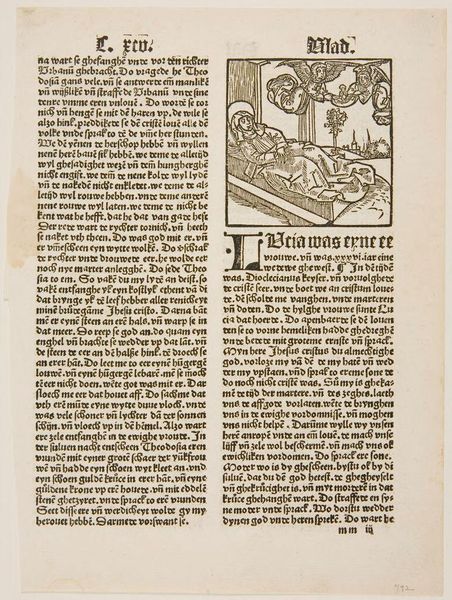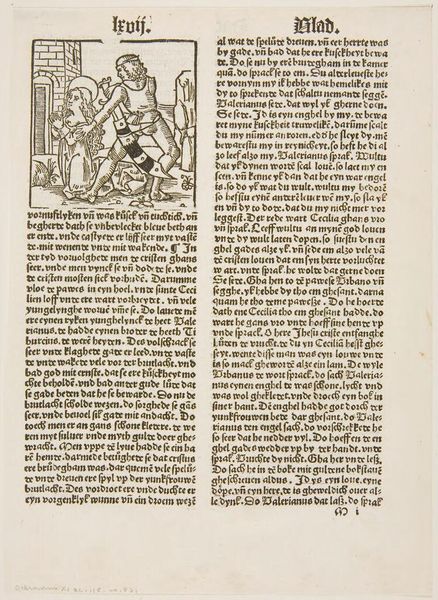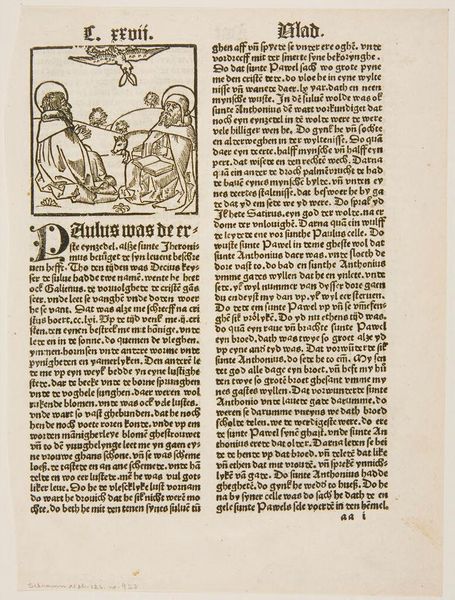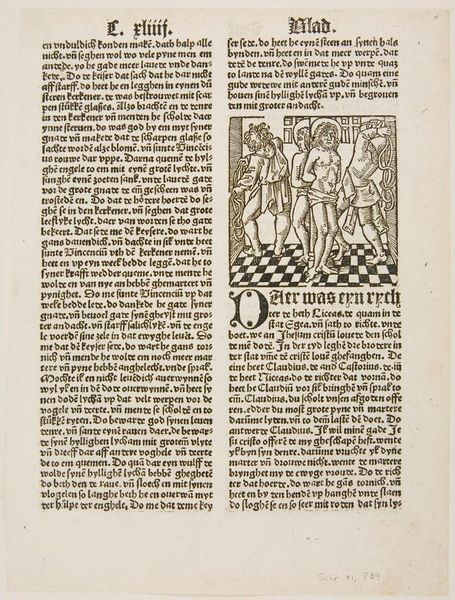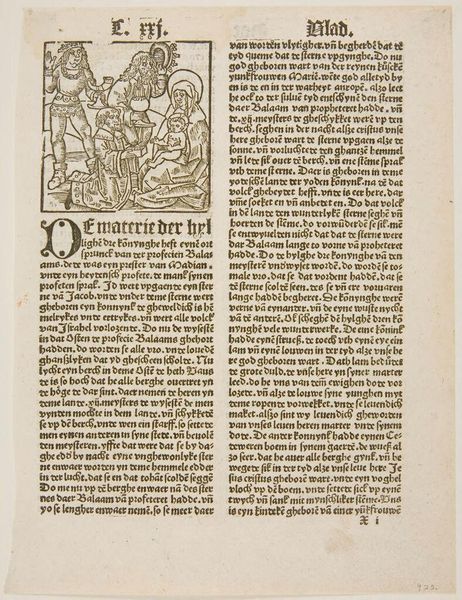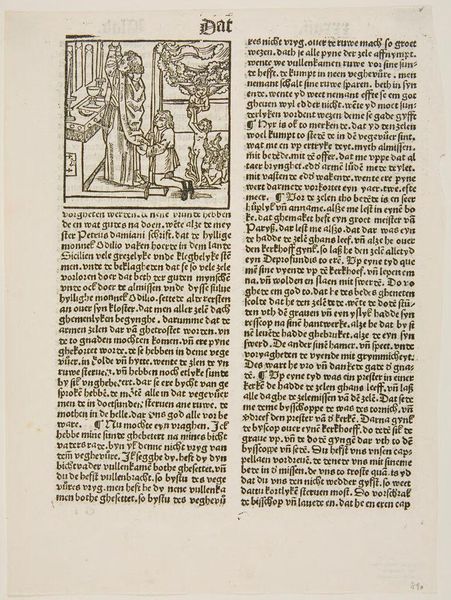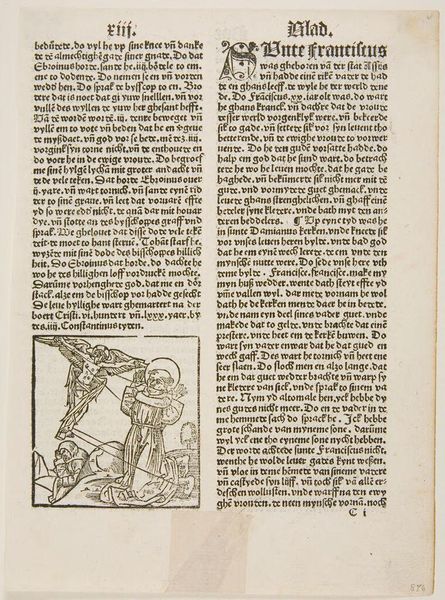
Copyright: CC0 1.0
Curator: Here we have an intriguing page, supposedly presenting Saint Gregory, though the artist remains anonymous. It's hard to pinpoint an exact date, but it’s part of the Harvard Art Museums collection. Editor: My first impression is… crowded. The dense text pressing down on that little vignette below feels almost claustrophobic. Curator: Notice how the figures with their crosses seem to emerge from this sea of words. The text itself forms a kind of atmospheric backdrop, a world from which this procession arises. What do you make of the procession itself? Editor: Structurally, it's fascinating. The artist uses line weight to create depth, but flattens perspective. All these figures are on top of one another in this very shallow space! Curator: It's as if the spiritual power of the event outweighs any concern for realistic representation. This isn't about accurate depiction; it's about conveying the intensity of faith. Editor: Absolutely! It's the essence of the procession that matters. The artist captures an idea, not just an image. And in the context of early printmaking, it makes sense they’re prioritizing legibility over realism. Curator: Looking at this, I'm left thinking about the enduring human need to give form to the unseen. Editor: For me, it highlights how art can both shape and be shaped by its medium. A constant conversation between content and form.
Comments
No comments
Be the first to comment and join the conversation on the ultimate creative platform.
